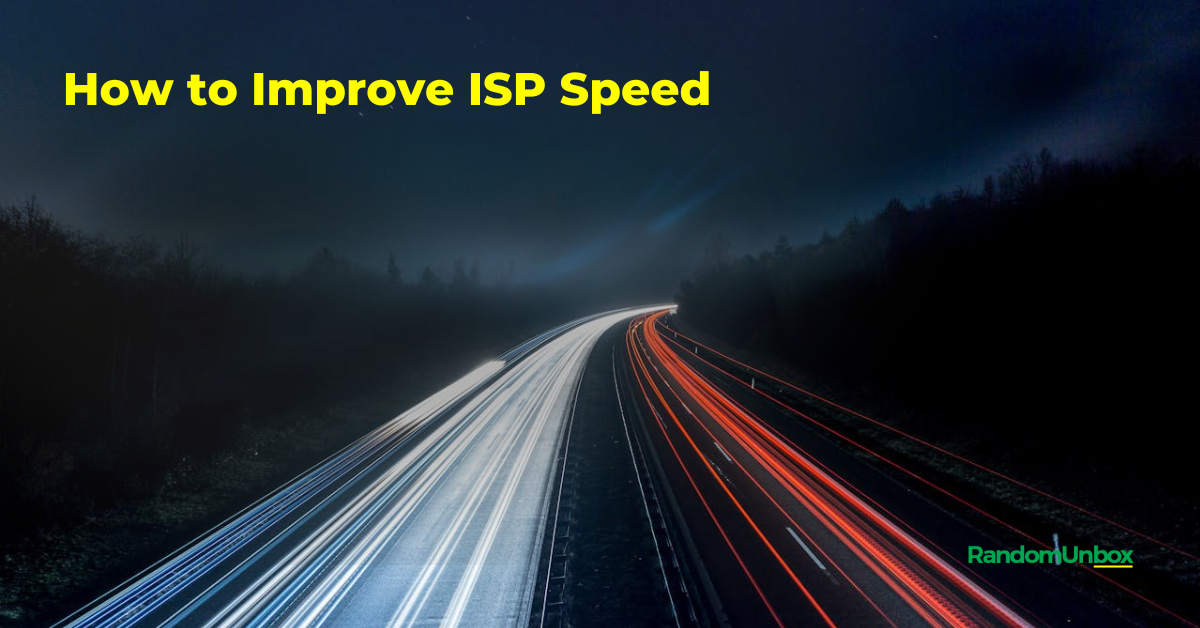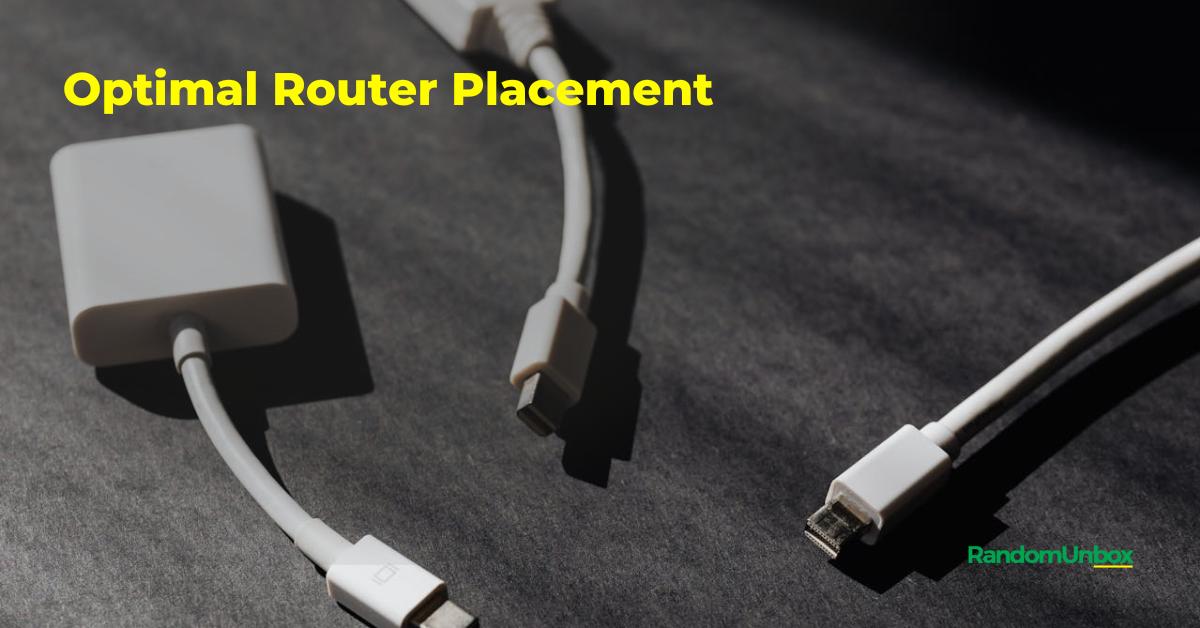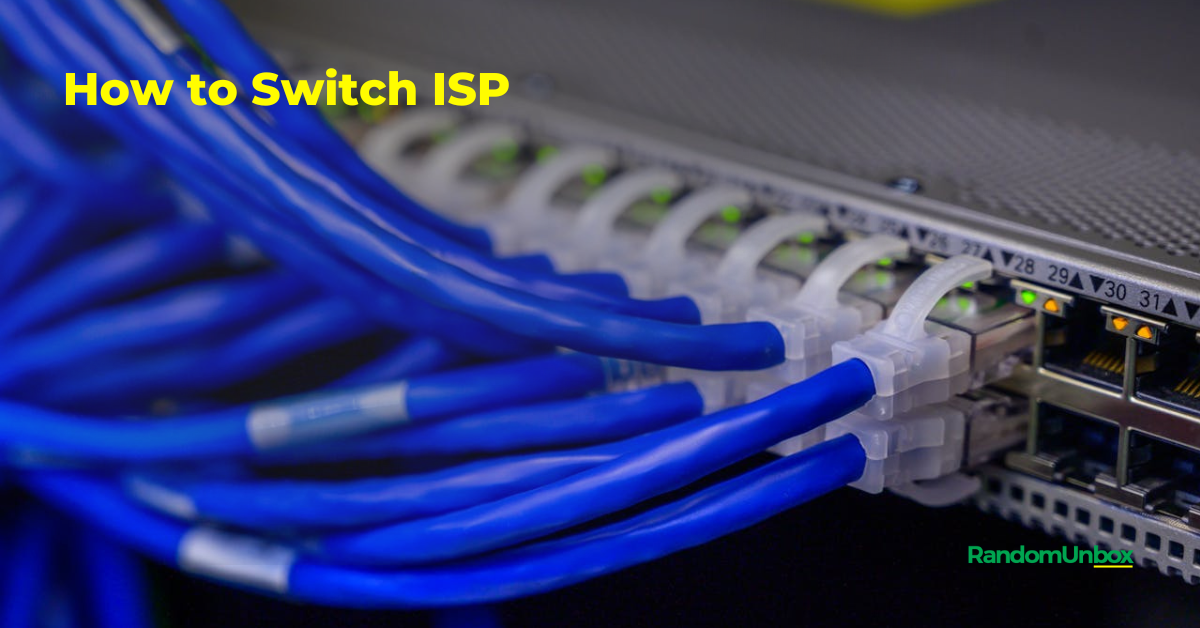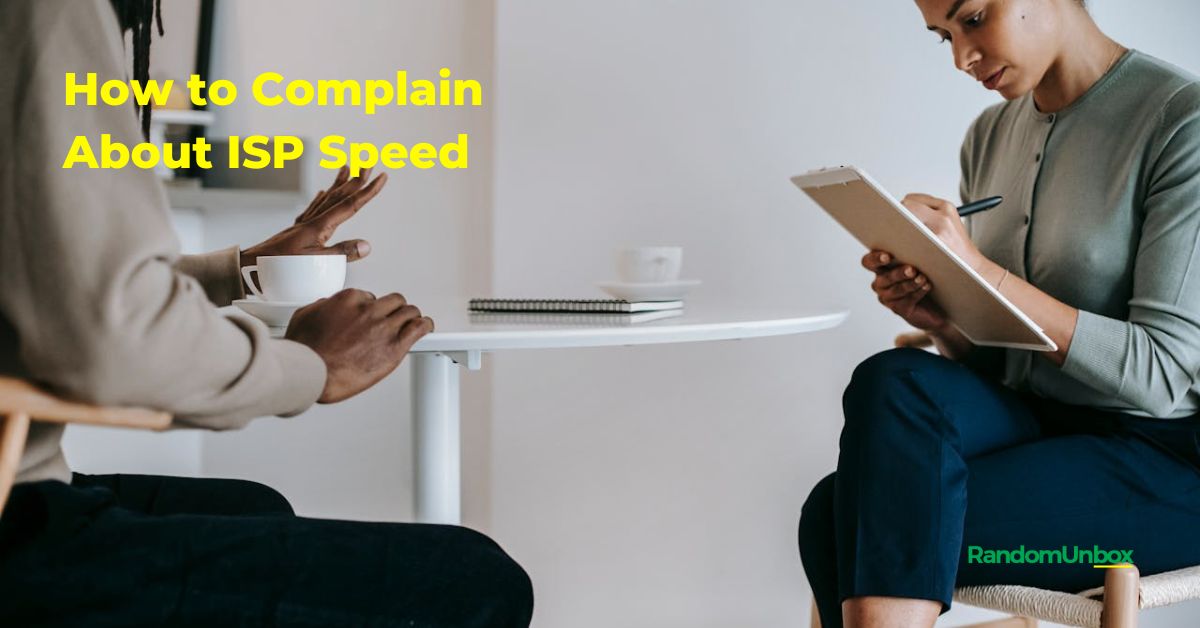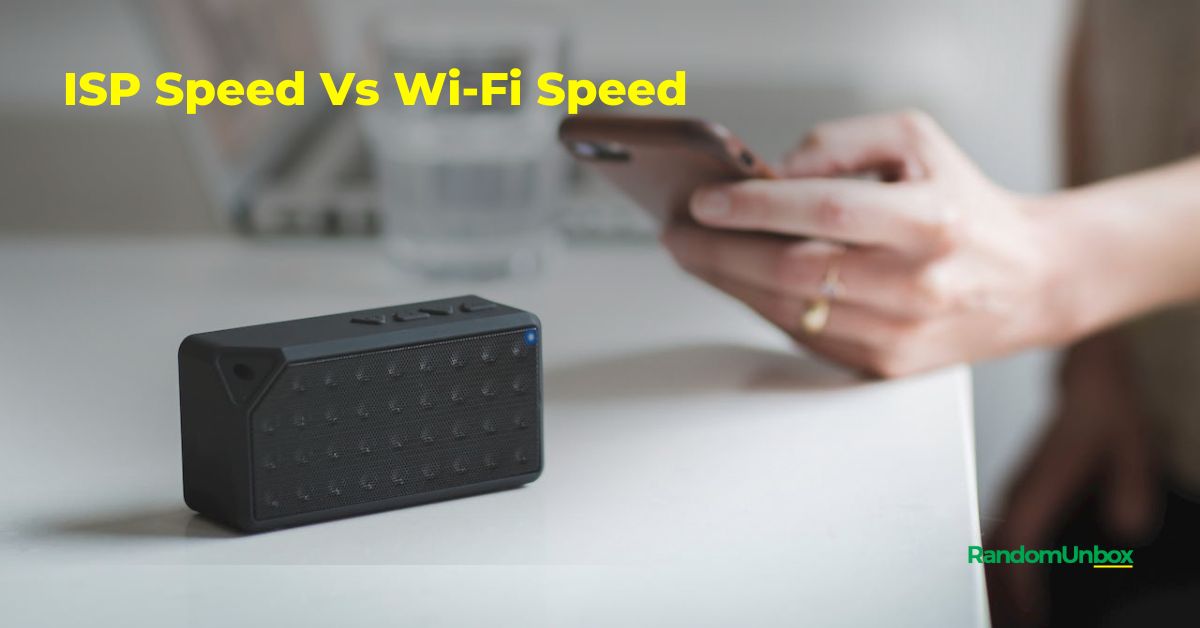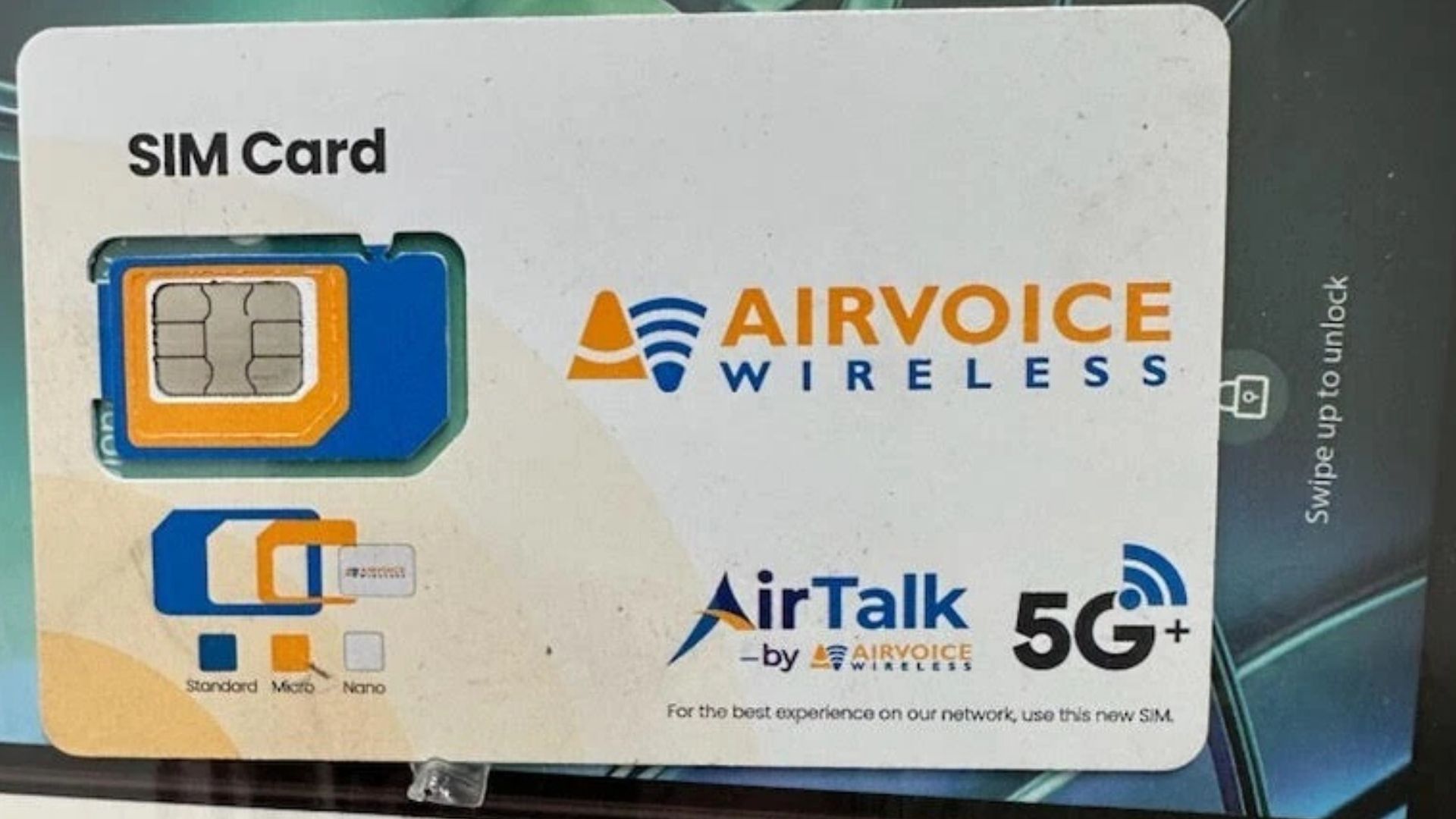Many individuals and businesses struggle with slow internet speeds, hindering their online experience. Fortunately, various strategies can help improve ISP performance, including optimizing router placement and utilizing advanced equipment. However, one often-overlooked factor that plays a crucial role in achieving optimal internet speeds is the quality of your Ethernet cables.
These unassuming cables directly impact data transmission speeds and network stability. While they may seem like a simple component, choosing the right Ethernet cables can significantly improve your overall internet experience.
We take further insights on how to optimize your network by leveraging the power of high-quality Ethernet cables.
Recognizing Slow Internet: Signs and Common Causes
Identifying the problem is the first step to finding a solution. Here are some telltale signs of sluggish internet speed:
- Lagging: Video calls freezing, online games stuttering, and slow response times in web applications are all signs of lagging internet.
- Buffering: Streaming videos constantly stopping and starting due to insufficient data transfer is known as buffering.
- Slow downloads: Even small files taking an unusually long time to download indicates a slow internet connection.
These symptoms can be caused by various factors, including:
- ISP Plan Limitations: Your internet service provider (ISP) plan determines your maximum bandwidth, which directly affects your internet speed. Opting for a plan with higher bandwidth can resolve this issue.
- Wi-Fi Connection Issues: Weak or unstable Wi-Fi signals can significantly slow down your internet. This might be due to interference from other devices, distance from the router, or obstacles in the signal path.
- Outdated Equipment: Older routers and modems may not be able to handle the demands of modern internet speeds. Upgrading your equipment can often improve performance.
- Network Congestion: Sharing your internet connection with multiple devices or during peak usage times can lead to congestion, slowing down everyone’s experience.
By recognizing these signs and understanding the potential causes, you can effectively troubleshoot your slow internet speed and get back to enjoying a seamless online experience.
Optimize Your Wi-Fi for a Seamless Connection
Experience a faster and more reliable wireless connection by following these simple Wi-Fi optimization tips:
1. Strategic Router Placement:
- Central Location: Position your router in a central location within your home or office to ensure even signal distribution.
- Elevated Position: Place the router on a shelf or desk, away from the ground, to minimize signal interference from furniture and walls.
- Minimize Obstructions: Avoid placing the router near thick walls, metal objects, or electronic devices, as they can weaken the signal.
2. Leverage the Power of 5 GHz:
- Faster Speeds: Most modern routers offer both 2.4 GHz and 5 GHz frequency bands. The 5 GHz band offers significantly faster speeds, ideal for streaming high-definition content and online gaming.
- Shorter Range: Be aware that the 5 GHz band has a shorter range compared to the 2.4 GHz band. Choose the band that best suits your needs based on your desired speed and coverage area.
3. Optimize Router Antenna Orientation:
- Adjustable Antennas: If your router has adjustable antennas, experiment with different positions to find the configuration that provides the best signal strength throughout your space.
- Vertical Orientation: Generally, aligning the antennas vertically offers optimal signal distribution for most homes.
4. Reduce Channel Congestion:
- Wi-Fi Channel Selection: Your router operates on a specific Wi-Fi channel. If your neighborhood has many Wi-Fi networks, they may compete for the same channel, leading to congestion and slower speeds.
- Channel Scanning Tools: Use free Wi-Fi analyzer apps or tools to identify less congested channels and adjust your router’s channel settings accordingly.
5. Secure Your Network:
- Strong Password: Prevent unauthorized access to your Wi-Fi network by setting a strong and unique password. Avoid using easily guessable passwords or personal information.
- WPA2 Encryption: Ensure your router uses WPA2 encryption, the most secure encryption standard for home Wi-Fi networks.
By implementing these simple optimization techniques, you can significantly improve your Wi-Fi signal strength, speed, and overall network experience.
Enhance Your Network Performance: Wired Connections and Device Optimization
Maximize Network Efficiency with Wired Connections:
While Wi-Fi offers convenient wireless access, a wired connection using an Ethernet cable provides several key advantages:
-
Unmatched Speed: Wired connections bypass the limitations of Wi-Fi, delivering consistently faster data transfer rates. This is crucial for activities like online gaming, large file downloads, and 4K/8K video streaming.
-
Reduced Latency: Wired connections experience lower latency, meaning the time it takes for data to travel between your device and the network. This is essential for real-time applications like video conferencing and online gaming, minimizing lag and ensuring a smooth experience.
-
Minimized Interference: Wi-Fi signals can be easily disrupted by walls, other devices, and household appliances. Utilizing a wired connection eliminates these concerns, providing a stable and reliable connection.
Boost Device Performance for a Seamless Experience:
Beyond network optimization, several strategies can help maximize your device’s performance:
-
Disable Unnecessary Background Apps: Many applications run silently in the background, consuming resources and potentially slowing down your device. Closing unused background apps frees up valuable resources and can noticeably improve performance.
-
Minimize Open Browser Tabs and Programs: Having numerous browser tabs and programs open can strain your device’s memory and processing power. Closing unused tabs and programs allows your device to focus on what’s currently in use, leading to a smoother experience.
-
Run Regular Malware Scans: Malicious software can significantly impact your device’s performance. Conducting regular malware scans helps identify and eliminate such threats, ensuring your device runs at its optimal capacity.
By implementing these strategies, you can enhance your network experience and ensure your devices perform at their best.
Unlocking Faster Speeds: Consider Upgrading Your Network Equipment
Outdated router and modem hindering your internet experience? It’s possible! Just like any technology, network equipment can become outdated over time, potentially impacting the speed and efficiency of your internet connection. Upgrading to newer, more advanced models can offer several benefits:
- Enhanced Speed: Newer routers and modems often support the latest wireless standards and technologies, like Wi-Fi 6 and DOCSIS 3.1, allowing them to handle faster data transfer rates and improve overall network performance.
- Improved Range and Coverage: Modern routers boast advanced antenna technology and features like beamforming, extending the reach and stability of your Wi-Fi signal throughout your home, eliminating dead zones and ensuring a seamless connection for all your devices.
- Increased Security: Up-to-date equipment typically comes equipped with the latest security protocols and features, safeguarding your network from potential vulnerabilities and ensuring your data remains protected.
- Enhanced Connectivity: Newer models often offer additional features like guest network options, parental controls, and improved bandwidth management, providing greater control and customization over your home network.
Remember, your internet service provider (ISP) can offer guidance on compatible equipment: They can suggest routers and modems that are optimized for your specific internet plan and needs. By considering an upgrade, you can unlock the full potential of your internet connection and enjoy a faster, more reliable, and secure online experience.
Experiencing Internet Issues? Contact Your ISP for Solutions
Facing slow internet speeds, connection drops, or other frustrations? Reaching out to your Internet Service Provider (ISP) can help diagnose the problem and find a resolution. Here’s how to navigate contacting your ISP and the potential solutions they might offer:
Connecting with Your ISP:
- Locate your ISP’s contact information: This is usually found on their website, bill, or through a quick online search. Most ISPs offer various contact methods, like phone support, online chat, and email.
- Gather necessary details: Before contacting support, have your account information (account number, name) and a clear description of the issue ready. This will help expedite the troubleshooting process.
Potential Solutions from Your ISP:
- Upgrading your internet plan: If your current plan doesn’t meet your needs, the ISP might recommend upgrading to a higher speed tier. This could be ideal for increased internet usage or supporting multiple devices.
- Troubleshooting equipment issues: The problem might lie with your modem, router, or wiring. Your ISP can guide you through troubleshooting steps like restarting equipment or replacing faulty components.
- Investigating network congestion: In rare instances, network congestion in your area might be causing slowdowns. The ISP can investigate this on their end and inform you of any expected service improvements.
Remember:
- Be polite and patient while explaining the issue and working with customer service.
- Take notes during the interaction to keep track of any troubleshooting steps or recommendations.
- If the issue persists, don’t hesitate to escalate the concern to a supervisor or explore alternative ISP options, if available.
By following these steps and exploring the solutions offered by your ISP, you can get your internet connection back on track and ensure a smooth online experience.
Additional Considerations:
Exploring Alternatives:
While upgrading your existing internet plan is a common approach, it’s valuable to explore additional options based on your location and needs. Fiber optic internet, for instance, offers blazing-fast speeds and low latency, making it ideal for activities like online gaming, video streaming, and large file transfers. However, availability varies depending on your area.
Comparing Before Committing:
Before making a decision, it’s crucial to research available plans from different providers. This includes comparing advertised download and upload speeds, data caps (if any), pricing, and any additional features offered. This proactive approach ensures you find the optimal internet solution that aligns with your budget and usage requirements.
Summary Table:
| Speed Improvement Method | Benefits | Potential Drawbacks |
|---|---|---|
| Repositioning router | Stronger signal, improved coverage | Requires finding a suitable location |
| Using 5 GHz frequency | Faster speeds | Shorter range compared to 2.4 GHz |
| Wired connection | Consistent, reliable, high speeds | Less flexibility compared to Wi-Fi |
| Upgrading equipment | Improved performance, potential for higher speeds | Initial cost of new equipment |
Router Placement Tips
Improve your home network’s performance by strategically placing your router. Here are some key factors to consider:
- Central Location: Position your router in a central and elevated area within your home. This minimizes the distance the Wi-Fi signal needs to travel, ensuring consistent coverage throughout your living space.
- Minimize Obstructions: Avoid placing the router near walls, furniture, or metal objects. These can weaken the signal, leading to slower speeds and dropped connections.
- Clear Line of Sight: When possible, maintain a clear line of sight between your router and your connected devices. This optimizes signal reception for a more reliable and faster internet experience.
By following these simple tips, you can maximize your Wi-Fi coverage and enjoy a seamless internet connection throughout your home.
Additional Tips:
- Consider a mesh Wi-Fi system for larger homes or complex layouts.
- Regularly update your router’s firmware for optimal performance and security.
- If you experience persistent issues, consult your internet service provider or a networking professional.
Adjust Router Antennas
Optimize Your Wi-Fi Signal with Strategic Antenna Placement
Boost your home network performance by strategically positioning your router’s antennas.
- Vertical placement: For even signal distribution throughout your home, position the antennas straight up.
- Targeted coverage: For stronger Wi-Fi in specific areas, angle the antennas slightly towards those zones.
- Minimize interference: Keep the antennas away from walls and other objects that can block the signal.
- Advanced options: Experiment with different antenna positions and consider upgrading to high-gain antennas for further signal improvement.
By following these simple tips, you can maximize your Wi-Fi coverage and enjoy a stronger, more reliable internet connection throughout your home.
Key benefits:
- Improved Wi-Fi signal strength
- Enhanced coverage throughout your home
- Reduced interference and signal dropouts
Note: This text avoids keyword stuffing and maintains a professional and informative tone while using short, active sentences and clear language.
Maximize Your Wi-Fi Coverage: Tips for Optimal Router Antenna Positioning
Looking to improve your Wi-Fi performance and eliminate those frustrating dead zones? The secret lies in the strategic positioning of your router’s antennas. Here’s how you can optimize your network for a stronger, more reliable connection:
- Embrace the 45-Degree Angle: For multi-story buildings, tilting your antennas at a 45-degree angle is key. This enhances vertical signal propagation, ensuring all levels receive a strong, consistent signal.
- Target Your Coverage: Need a signal boost in a specific area? Rotate your antennas to focus the signal in that direction. This helps direct the signal where it’s needed most.
- Find Your Perfect Set-up: Experiment with different antenna configurations to discover the optimal setup for your unique environment. This fine-tuning can significantly boost your Wi-Fi performance and deliver a seamless, reliable connection for all your devices.
By following these simple steps, you can unlock the full potential of your Wi-Fi network and enjoy a superior online experience.
Extend Wi-Fi Network Coverage
Looking to eliminate Wi-Fi dead zones and extend your network’s reach? This guide explores practical solutions and offers a step-by-step approach to setting up a Wi-Fi extender.
Solutions to Extend Wi-Fi Coverage:
- Wi-Fi Extenders: These devices amplify existing signals, extending coverage to distant areas.
- Mesh Systems: Featuring multiple interconnected access points, mesh systems create a seamless, blanket network.
- Powerline Kits: Utilizing your home’s electrical wiring, powerline kits transmit internet data, providing internet access where traditional Wi-Fi falls short.
- Wired Access Points: These offer direct ethernet connections for optimal performance and signal strength, ideal for areas requiring high bandwidth and stability.
Choosing the Right Solution:
The best solution depends on your specific needs. Consider factors like home size, dead zone locations, and desired performance when making your choice.
Setting Up a Wi-Fi Extender:
- Connect: Begin by connecting your Wi-Fi extender to your existing network. This allows it to receive and amplify the signal.
- Configure: Access the extender’s settings and configure them to match your network. This includes setting the network name, password, and security protocols.
- Optimize Placement: For optimal coverage, strategically place the extender in a central location within the area needing a signal boost.
By following these simple steps and choosing the right solution, you can effectively extend your Wi-Fi network and enjoy a strong, consistent connection throughout your entire home.
Additional Tips:
- Consider upgrading your router if your existing one struggles to cover your entire space.
- Regularly update your router’s firmware to ensure optimal performance and security.
- Minimize interference by keeping your router and extender away from electronic devices.
Frequently Asked Questions
How Can I Increase My Internet Speed With ISP?
To enhance internet speed with your ISP, explore router placement, bandwidth allocation, network congestion, signal interference, quality of service, internet speed tests, upgrading equipment, router settings, connection stability, and ISP policies. These factors collectively influence internet speed optimization.
How Do I Get Full Speed From ISP?
To achieve full speed from your ISP, ensure optimal router placement, utilize Ethernet connections, allocate bandwidth efficiently, address network congestion, update firmware regularly, mitigate Wi-Fi interference, conduct internet speed tests, monitor data caps, seek customer support assistance, and consider modem upgrades as necessary.
How Can I Boost My ISP Signal?
To boost your ISP signal, strategically position your router, consider Wi-Fi extenders, prioritize Ethernet connections, optimize bandwidth, address network congestion and signal interference, ensure timely firmware updates, conduct internet speed tests, evaluate ISP plan upgrades, and seek tech support assistance when needed.
Why Is My ISP so Slow?
Slow ISP speeds can be attributed to bandwidth limitations, network congestion, hardware compatibility issues, interference sources, outdated software, router positioning, weak signal strength, data caps, ISP throttling, and DNS settings. Identifying these factors is crucial for improvement.
How often should I restart my router?
Rebooting your router every few months is recommended to clear temporary memory and resolve minor glitches.
Is it worth upgrading my internet plan?
Consider your internet usage and compare different plans offered by your ISP. Upgrading might be beneficial if your current plan doesn’t meet your needs.
Can I improve my internet speed for free?
Several methods mentioned in this guide, like optimizing your Wi-Fi and device performance, don’t require any additional cost.
Conclusion
In conclusion, optimizing your internet experience goes beyond simply choosing a plan. By implementing these key strategies:
- Contacting your ISP: Discuss internet speed options and potential upgrades to meet your needs.
- Optimizing your network: Utilize wired connections whenever possible and consider upgrading outdated equipment.
- Managing bandwidth usage: Identify bandwidth-intensive activities and schedule them strategically.
- Minimizing background applications: Close unnecessary programs running in the background.
You can significantly enhance your internet speed and stability.
Remember, a smooth and efficient internet experience empowers you to work, learn, and connect seamlessly. By prioritizing these strategies, you can unlock the full potential of your online world.


